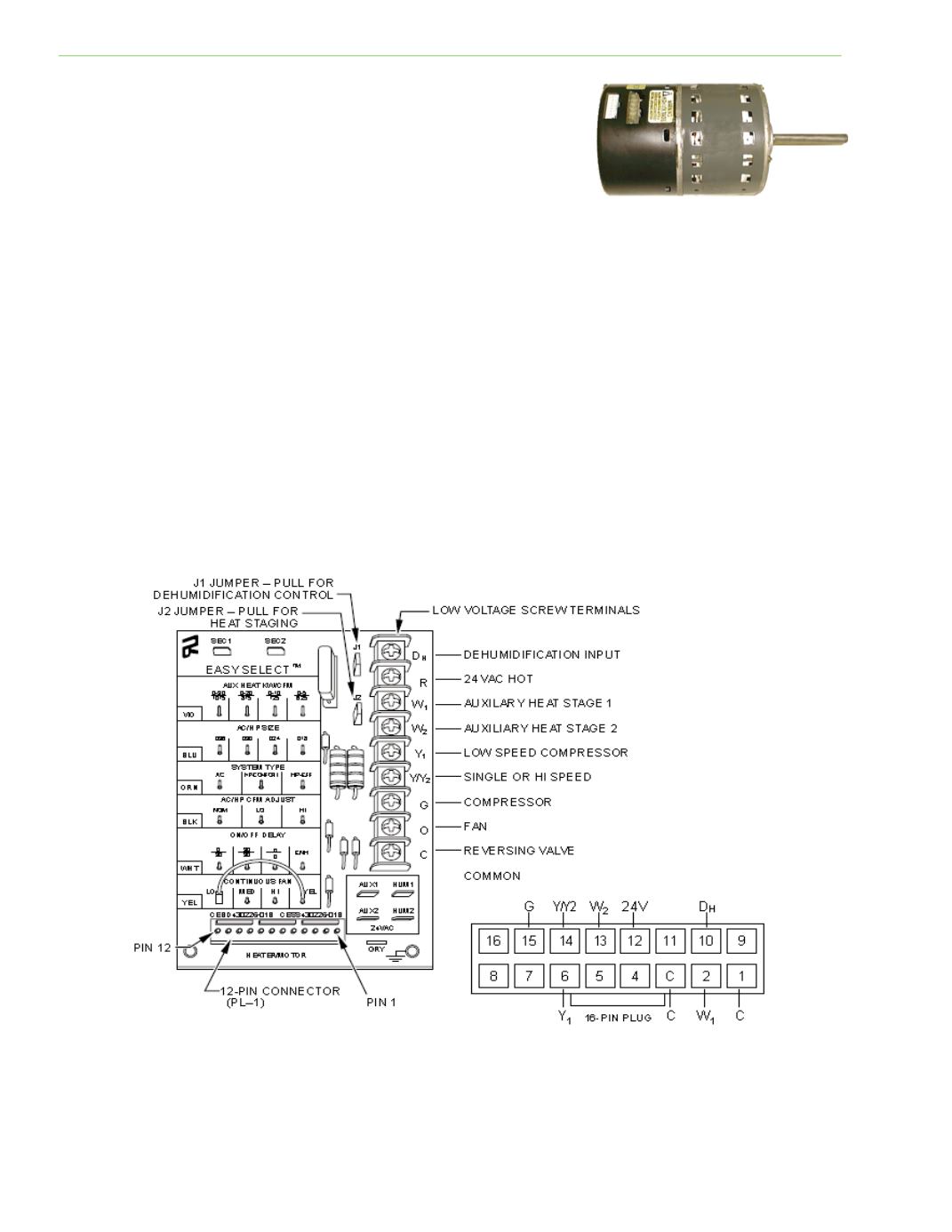

Page 62
Chapter 3: Motors
Electrical Theory & Applications for HVACR
ELECTRONICALLY COMMUTATED MOTORS (ECMs)
ECMs run at very high efficiencies for single‐phase motors. An
ECM is a brushless DC motor operated by an aƩached variable
frequency drive. The rotor has three permanent magnets
mounted on the outside to create three poles. The stator has
three windings, just as a three‐phase motor does. An
electronic inverter control mounted to the back of the motor
pulses a DC voltage, to energize one winding at a Ɵme. The
frequency drive can be set for the proper speed for heaƟng
and cooling or variable speed operaƟon, depending on the manufacturer’s controller.
When used as a mulƟ‐speed motor, the air handler has a circuit board with dipswitches or wire
jumpers that must be selected for proper cooling or heaƟng CFM. Electronic thermostats monitor the
indoor relaƟve humidity as well as temperature, and vary blower speed to control humidity and CFM
for stages of heaƟng and cooling. OperaƟon of the ECM on a blower is quite different than on a
regular motor. When blower air flow is blocked, the motor current increases to maintain the correct
RPM for the air flow seƫng, whereas in a PSC or other motor, current decreases with air flow. This
inherent property of ECM blowers allows for operaƟon at a higher duct staƟc pressure. The motor
saves energy by running at approximately 50 percent cooling speed when the thermostat fan switch is
set to the “conƟnuous” posiƟon.
Fig. 3‐19: Electronically commutated motor
Fig. 3‐20: ECM control board










